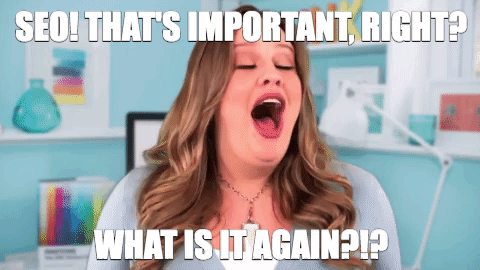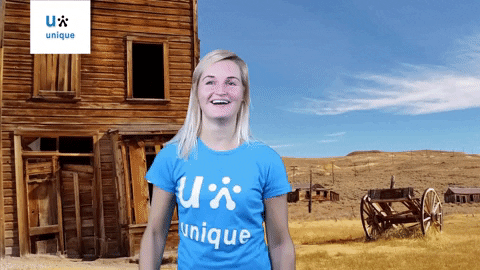
One thing you should know as a dropshipping company owner before establishing your website is how to employ search engine optimization (SEO). In comparison to companies that sell their own product, dropshipping sites face a unique set of SEO challenges, thus knowing how to use SEO is critical. This SEO beginner’s guide is intended for those who are unfamiliar with the concept. It’s also designed for folks who work in the dropshipping industry or run stores that rely on data feeds. Anyone interested in learning about SEO for beginners will discover essential tips for increasing the quantity of organic traffic to their store or website. Are you completely unfamiliar with this concept? Don’t be concerned! You will learn how to SEO here without any prior experience or understanding.
The first thing to remember before learning how to use SEO for your organisation is that there are many moving parts to the jigsaw. Because Google’s analysis of quality material is becoming increasingly more complex, it’s critical to grasp the various criteria that the algorithms use to rank your material. To put it another way, SEO isn’t as simple as stuffing as many optimised keywords into a piece of text as possible. It’s also about producing high-quality writing that adds to your knowledge and provides material in a way that your readers will find valuable. This SEO guide is divided into two sections. We’ll go over some fundamental principles about SEO in the first section, and then we’ll go into some actionable SEO principles that you should follow if you want to succeed. I’ve also compiled a list of SEO courses that you can enable you to learn SEO effectively, if that’s of any interest to you.
Table of Contents
SEO for Novices
So, first, let’s go through the basics of what SEO is. After all, this is an article about SEO for beginners, and we did claim you wouldn’t need any prior knowledge to benefit from it. SEO stands for search engine optimization, and in its most basic form, good SEO results in higher rankings when a user types in related keywords into a search engine. The goal is to increase organic traffic to your site, which is traffic that comes from sources other than paid advertising. It’s a fantastic method for raising brand awareness and, as a result, sales without having to spend a lot of money on marketing.
Search engine optimization (SEO) is utilised for a variety of content kinds, including photo, video, news, and even academic papers. Knowing how to use SEO correctly can be a critical factor of distinguishing yourself apart from the competition, especially as dropshipping ecommerce becomes more prevalent.
SEO is made up of a variety of interconnected techniques, and it only functions at its best when all of them are taken into account. Incorporating thoroughly researched keywords into your text is a crucial part of SEO. It’s tempting to stuff as many keywords as possible into your post, but SEO is all about striking the right balance between a variety of other characteristics, such as originality, writing quality, internal linking, site structure, social proof, and more. Another crucial aspect of understanding how to use SEO efficiently is thoroughly inspecting your website for any mistakes or issues that may be preventing it from achieving higher Google ranks. Sites like Screaming Frog can assist you detect issues with your content’s URL structure and formatting, such as sluggish loading times and mobile friendliness.
As you become more familiar with the various principles and components that go into SEO, you’ll discover how important it is to optimise your product page with keywords, links, and other elements. It can be tempting to pack as many keywords as possible into a piece of text or to pack it with internal links. However, be mindful about doing so. Above all, you want to make sure the text is natural, readable, and in other ways user-friendly. This is one of the most important aspects of learning how to use SEO to your company’s advantage.
It’s also worth noting that knowing how to use SEO for your company isn’t something you can do in a day. It’s a set of tactics that work best when you take a long-term approach and are dedicated to learning and staying current on the many aspects of SEO because they change all the time as the internet’s analytical powers improve.
Let’s go over some of the major ideas linked with SEO that go into successfully raising rankings and organic traffic now that you have a basic understanding of SEO and what goes into the rankings that Google provides. This information will lay the groundwork for your understanding of how to use SEO to its full potential.
In addition to all this information, if at any point, you feel like learning, and implementing SEO on your own is consuming too much time or you feel overwhelmed by the sheer depth of SEO syllabus, it’s best to not get caught in the web of procrastination and simply hire an SEO expert.

Key Concepts in Search Engine Optimization
We’ll need to go over a few fundamental ideas before we get into the concrete methods you can improve your SEO results, because no SEO guide would be complete without them, especially one aimed at beginners!
Guidelines for Keyword Counts in SEO
In dropshipping SEO rankings, the length of content on each page of your website is critical. The more words you have on your content page, the easier it will be for search engines to figure out what it’s about. This is, in reality, one of the most basic and well-known parts of learning how to SEO.
The first part of using keywords in your site text is to include them in the right proportion to the overall amount of text. As a result, we recommend including at least 350 to 500 words every page as part of our SEO strategy. Keep in mind that the material must be beneficial to your user in order for them to enjoy their visit to your store. As a result, the content itself must appear natural. This is one of the most crucial aspects in learning how to effectively use SEO. You can start optimising the text itself with keywords, links, and other tactics to increase your ranks.
Stuffing material towards the bottom of a page or concealing it under a menu or other expandable field can result in site penalization because you want the material to look natural and be valuable to visitors who visit your site. Instead, attempt to be cautious when it comes to the information you use on your website. Try adding information in the form of an introduction to welcome visitors if you want to include more content on a category page, for example. On the other hand, if it’s a product page, you can provide material that describes each product in detail.
If you’re stumped for what to say, try the following questions to get your creative juices flowing. What exactly is it? Who is it intended for? What can you do with it? When is the most appropriate moment to use it? What are the benefits to your consumers if they use it? What is the best way to use it? Remember to include a description of your product’s competitive edge.
H1 Tags for SEO in Dropshipping
Let’s discuss about titles and tags now. Your H1 tag is similar to a book title. It’s one of the first things search engines see when they read your webpage, and it summarizes what a reader will discover there. If you’re on a product page, the H1 tag will be the title of the product. If it’s a category, it’ll be the name of the category. Use modifiers such as ‘best,’ ‘top,’ and ‘buy.’ To get you started, here’s a list of modifiers.
Don’t overdo it with the keywords in your H1 tags, just like with image names and alt tags, which we’ll talk about later. This could be considered spam by Google. If you do, you may face an over-optimization penalty. In the terrible example below, notice how the phrase “blue hats” is repeated. This is an example of what is known as “keyword stuffing.”
A nice H1 tag would be:
<h1> Black Shoes </h1>
The following is an example of a poor H1 tag:
<h1> Sale on our smart black shoes. Buy black shoes today from our amazing black shoes store </h1>
Dropshipping SEO Title Tags
Title tags are crucial in dropshipping SEO. The title tag is what appears in the search results when someone uses a search engine. The title tag should be under 55 characters long, according to Moz. It should also be related to the search words you want to rank for while also being tempting enough to get people to click on it.

When a person bookmarks a page in the Bookmarks tab, as well as when they utilize the browser buttons in the top left corner of the screen to move forward and backward, the title tag is displayed. Furthermore, the title tag is what shows up in a user’s browser history. Because the title tag has so many functions, it’s critical to keep it descriptive, brief, and user-friendly.
How to Make Your Meta Descriptions SEO-Friendly
The Meta description is another key SEO element. Meta descriptions appear just beneath the title tag when you use a search engine. They should be between 120 and 155 characters long. They should be relevant and describe what the person will see if they click through to the page. You’ll truly stand out from the crowd if you nail this part of our beginner’s guide to SEO.

Make sure your description tags stimulate clicks when it comes to dropshipping SEO in particular. Give the person a cause to want to visit your website by describing what they will find in your meta description. You may do this by providing information in the meta description about a great deal, a how-to guide, or an attention-grabbing list. For ideas and samples, look at the title tags and meta descriptions of higher-ranking pages. How do you write something that ranks higher than them?
Internal Links: How to Use Them for SEO
Linking is another important component of learning how to use SEO. Internal links are links on your website that lead from one page to another. They differ from backlinks and external links in several ways. Internal links should always have the ‘do follow’ html tag. By doing so, you’re instructing search engine webpage crawlers to visit the page to which it’s connecting, granting ranking authority from that page to the next. To put it another way, internal links can be used to inform search engines which sites to rank. They also assist your clients in finding other pages on your website.
Internal links in dropshipping SEO tell search engines which pages you want to rank for specific keywords. They also aid in the categorization of your site for search engines and increase domain authority. If you have a great blog article or infographic with a lot of high-quality backlinks, adding a related internal link to a descriptive keyword could help the page you’re linked to rank higher.
Keeping this in mind, the greater the number of internal links on a page, the less authority each one can pass. For example, if you have two internal links, each of them has 50% authority. The number three equals a 33.3 percent transfer. You must also factor in navigation, category links, and other factors. The order in which the links are placed may also be significant. If you have three internal links, one of which is at the top of your content and the other two at the bottom, the top one may receive 60% of the authority and the bottom two may receive 20% each. Here’s how to create a solid internal connection structure.
Internal links, as you can see, are quite vital for SEO. Add them just if they’re important and linked, and don’t go overboard. This way, you’ll strike the ideal mix between increasing ranks and making your content appear natural.

Backlinks: An SEO Guide
Backlinks are an important part of learning how to SEO since they drive visitors back to your site. Backlinks are links that point back to your website from another website. They are the most significant ways of getting a website to rank well in search engines when combined with the content of your website. Search engines go to great lengths to guarantee that backlinks to a website are natural. However, don’t buy backlinks to boost your domain authority or you’ll get penalized.
The key lingo you’ll need to know about backlinks is as follows:
Do not forget to: These provide authority to your site and help it rank higher.
- No follow: These links point to your website, but they don’t pass authority, thus they won’t help you rank. They have rel=”nofollow” in the tag someplace. A natural blend of do and no follow links is required.
- Keyword-rich (anchor text) links: These are links that are based on specific phrases or keywords (anchors). Here’s a quick anchor text guide for your reference.
- Natural links are those that are based on your company name, your name, or a version of your URL or brand.
- Unnatural: When you have tracking parameters tied to a link, do follow links in sponsored posts, or anything that wouldn’t have happened organically, such as connections to a category page on an ecommerce site, for example, an affiliate link, it’s considered unnatural.
Penalties may be imposed if there are too many keyword-rich or artificial backlinks. Don’t construct too many of these. Make it less than 20%, if not less than 10%, of your whole link profile.
Backlinks are an important part of SEO.
How to Improve Your SEO by Using External Links
Understanding how external links factor into the equation is also a crucial aspect of this beginner’s introduction to SEO. External links direct visitors to sites other than your own when they click on them. If you run an ecommerce business, only use external links in blog posts. When you source a site or say something relevant to your readers, including an external link to a blog post is a good idea.
Read Google’s recommendations on do follow vs. no follow links before adding any external links, and then ask yourself the following questions:
Will my reader profit from a link to this site?
Is the page to which I’m linked going to be around for a long time, or is it possible that this site will go out of business?
Is there any other content on the site that is irrelevant or unsuitable for my audience?
If you answered yes to the first two questions but no to the third, this is a suitable place to link to.
Meanwhile, the reason you shouldn’t add external links on a shopping page is that they will direct people away from that page if they click on them. This may cause people to become distracted from making a purchase.
Beginner’s SEO Guide to Canonical Links
Canonical links are the next step in this beginner’s SEO approach. Search engines use canonical links to choose which page to index in their search results. Assume you have three pages on your website with the identical product, information, and image on each. To indicate which is the correct one to index, you’d use a canonical link. It’s important to keep in mind that you don’t want all three competing for space, nor do you want duplicate content issues, as we mentioned earlier in this SEO tutorial. You could also want to employ canonical links if you’re performing a split test experiment to see how successful some of your store’s pages are.
For your dropshipping SEO strategy, create a sitemap.

Learning how to utilise SEO to develop a sitemap for your website is an essential SEO beginner guideline. A sitemap is basically a list of all the pages on your website that Google should be aware of. They include categories, subcategories, and product pages and are broken down from your site’s highest level pages. Sitemaps can be created in a variety of ways, including using links and XML feeds, among other easy approaches. Make sure your sitemap doesn’t have any 404 or 301 redirects or pages.
How Paginated Pages Can Help You Improve Your Search Engine Rankings
Pagination is another crucial component of learning how to use SEO. A series of pages on your website is referred to as pagination. Consider a product category page with pages 2, 3, 4, 5, and so on. Previously, you’d have to create a canonical link to a page that had all of your products, but now Google provides rel prev and rel next. You may guide it through the series by adding this into a paginated series, and you won’t have to worry about Google penalising you for duplicating material, as described earlier in this beginner’s approach to SEO.
Schema for SEO
The following words about Schema are an essential part of learning SEO for newbies. All of the major search engines collaborated to create Schema.org. It gives you the code and snippets you need to tell search engines about your page’s details. For example, code is used to indicate that the page has a video.
Notably, by including schema markup on your pages (it’s a lot easier than you think; don’t be intimidated), you can help the main search engines better understand what that page is about. It also demonstrates what the final consumer will discover on your page. You then provide them new features to include in the search results (such as videos or photos adjacent to a result) and further define the user experience. As a data feed and dropshipping site, Schema is an essential and sometimes disregarded part of SEO that can assist you get an edge.
SEO for datafeeds and dropshipping
You’ve undoubtedly noticed the word “data feed” repeated a few times throughout this post before we go on to the actionable strategies and methods you can employ to enhance your rankings and organic traffic for SEO. If you’re dropshipping, you’re probably getting a lot of information about your products from an existing product data feed, from descriptions to photographs to basic product data. The data feed is a file of information provided by your supplier that merchants can access when importing items into their stores. Data feeds are unquestionably beneficial to ecommerce company owners, especially when dropshipping products. Just keep in mind that copying and pasting the contents of a data feed into your shop without making any changes will be considered duplicate material, but more on that later.
Tips and Tricks for SEO

The second section of our SEO for beginners guide is filled with actionable tips and tactics you can use to successfully implement all of the above knowledge now that we’ve covered the fundamental ideas connected with knowing how to use SEO effectively.
Duplicate content should be avoided at all costs.
Without emphasizing the significance of eliminating duplicate material whenever possible, no beginner’s approach on SEO would be complete. When two websites share the same content, this is referred to as duplicate content (and in severe cases the same exact code).
Dropshippers rely significantly on data feeds provided by other businesses, warehouses, and manufacturers because they don’t generally maintain inventory. These are the XML feeds and spreadsheets that supply their stores with merchandise and inventory.
The information, photographs, descriptions, and everything else in the feed is shared with every site that uses it, thus it isn’t “unique.” Due to the fact that it isn’t unique, websites built with it suffer from a problem known as “duplicate content.”
As a result, search engines have a difficult time deciding which one to rank higher than the others. When data feed sites employ the (duplicate) content provided by the feed, they rarely get strong SEO rankings. This is why, in order to compensate for any use of this data feed information in your rankings, you should also follow our SEO basic rules and use the additional techniques below.
Here’s where to start if you want to set your site apart from others that use the same feeds.
Unique Images Can Help You Improve Your SEO Rankings

The second suggestion for improving rankings in this SEO advice is to take your own original product images, which is related to providing unique content. While it may need a little extra effort at first, this will significantly enhance your dropshipping SEO ranks. You’ll be able to differentiate your products from those sold by other merchants selling the identical dropshipped things (potentially from the same suppliers), while also avoiding duplicating content.
If you can’t take your own pictures for whatever reason, you can obtain the product photographs from the data stream. After that, rename them to match the product in the image and save them to your database and server.
Keep in mind that the order in which you name your images is crucial. If you sell both medium and large blue hats on your ecommerce site, don’t confuse the search engines by calling them both blue hat. The image will be more search engine friendly if it is named medium-blue-hat.jpg and large-blue-hat.jpg. Even if it looks insignificant, this is an important stage in our beginner’s guide to SEO, so don’t overlook it!
Make Use of Alt Tags in Your Images
Making your alt tag reflect the picture name is the next actionable step in our beginner’s guide to SEO on the subject of images. This is one of the factors that many search engines consider when determining what an image is about and when it should be displayed to a user. Here’s how it looks in HTML:
<img src=”image url” alt=”insert alt tag here”>
Make Your Image Titles More Effective
Adding image titles and captions is another important aspect of learning how to use SEO effectively. If you use them, they should be similar to or identical to the picture name and alt tag. In the title=”insert title here” part of the HTML, the title attribute should be inserted.
Also, don’t go overboard here. In the image’s name or tags, you don’t want too many keywords, descriptive terms (modifiers), or other words. This could be considered “keyword stuffing” and could result in a penalty.
Alternatively, you can use a third-party programme like Minifier to optimise your picture filenames, ALT tags, and titles.
Become a Product Description Master
If you leave the product descriptions alone, they’ll be deemed duplicate material. This is one of the more critical issues you’ll want to address. As we’ve already established, having unique and useful content on your websites can help you stand out from the crowd. Consider reworking both your long and short product descriptions to increase your dropshipping SEO.
The product’s long and short descriptions must both be unique, according to one of the many key SEO standards. You risk not being found in search engines if your product descriptions are the same as everyone else’s. Original, useful, and accurate descriptions will be crucial in helping these pages rank for long tail and highly competitive keywords. You’ll be well on your way to understanding how to SEO for your ecommerce store if you nail your product descriptions.
Showcase Your Product’s Specifications
If your products have specs that come with a data feed, rather than simply copying and pasting the information, develop a unique approach to present or talk about the specs in dropshipping SEO. Although search engines assume the specifications to be similar in nature, that doesn’t mean you can’t explain what they imply or present them in a unique and more useful way.
What Not to Do in SEO for a Beginner

There are numerous SEO beginner guides available that include shortcuts and side steps for obtaining quick and fast backlinks or generally increasing traffic without having to commit to learning SEO in depth.
Many of the blackhat strategies you’ll see in dropshipping SEO, on the other hand, may potentially result in your website being punished. Regrettably, you run the risk of never being able to rank again. Furthermore, you’d have to put in considerably more effort merely to get the penalty lifted. Furthermore, if you do receive a penalty, it can take years to have it removed. As a result, the final point to mention in this tutorial on how to use SEO for your organization is that you must not scrimp on quality. Here are a few additional things to stay away from when trying to improve your online store and increase organic traffic.
When constructing links, stay away from the following:
Directory submissions: Unless the content is 100% niche, relevant, and manually updated, avoid them. If you do decide to use these, using the ‘no follow’ option is much smarter.
Don’t utilize blog comments, especially if they’re based on keywords.
Forum comments and links are frowned upon by search engines since they are so simple to obtain and may be obtained by anyone.
Automated link builders are software programmes that comment on blogs, forums, and communities for you using bots and crawlers. Using this strategy can result in a negative brand image among bloggers and relevant internet groups. Furthermore, the backlinks are easily traced to your site, increasing your chances of being penalized.
Avoid reciprocal linking when it comes to link exchanges. Too many of them appear unnatural, and it was one of the first SEO mistakes to be penalized by Google.
Sites and businesses that construct link farms are another way to be mapped and penalized.
Sponsored posts: Giving people or influencers money or products in exchange for a post with a ‘do follow’ link may result in a penalty for your website (and theirs). You’ll undoubtedly want to deal with genuine influencers, but make sure everything is set to “no follow” so your site doesn’t get penalized.
Here’s a list of guest blogging tips to get you started with the most google-friendly link building activity of our times.
Conclusion for Beginners in SEO
When it comes to dropshipping SEO, there’s a lot to consider. This SEO article teaches the essentials for better optimizing your store through SEO, whether you have a data feed, a dropshipping ecommerce site, or you warehouse the merchandise.
It’s important to remember that updating your material on a frequent basis is an important component of making these suggestions and key concepts work for you. Dropshipping SEO is not a simple or quick approach to increase traffic. To properly master it, you’ll need a complex level of understanding and a long-term strategy. You’re already on the right track to getting started with SEO if you practice and follow these beginner’s SEO principles.
Not to mention, once you start getting results, you’ll realize that SEO is an important element of developing organic traffic for your ecommerce store, so be patient and never give up!
I will say in conclusion that if you have too many things on your hands, and SEO sounds like a far-fetched adventure, connect with a proven digital marketing consultant like me, and focus on aspects of your business that warrant your most attention.

Sanam Munshi, the driving force behind Collab Lab, is more than just our founder – he’s a digital marketing maestro with 14 years of diverse experience. From playing key roles at top US agencies and SaaS companies to co-founding the Australian digital powerhouse Skyward Digital, Sanam’s career is a journey of breakthrough achievements. His expertise lies in guiding teams to shatter performance records in the most competitive online arenas.
Sanam embraces a simple yet profound philosophy: Embrace change, because it’s the only constant. His positive outlook and wide-ranging experience make him a master not just in business, but in building lasting relationships across industries. At Collab Lab, Sanam does more than manage operations – he nurtures growth, cultivates client partnerships, and steers us towards uncharted territories of success.






